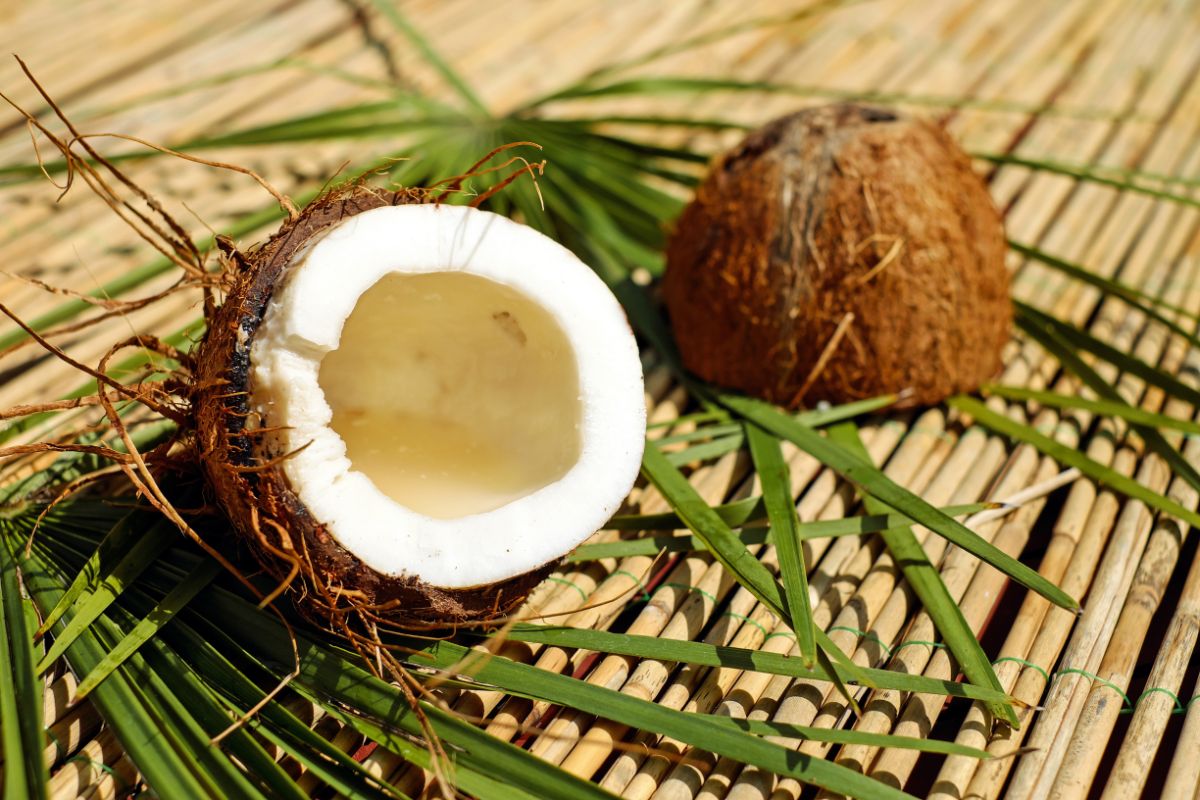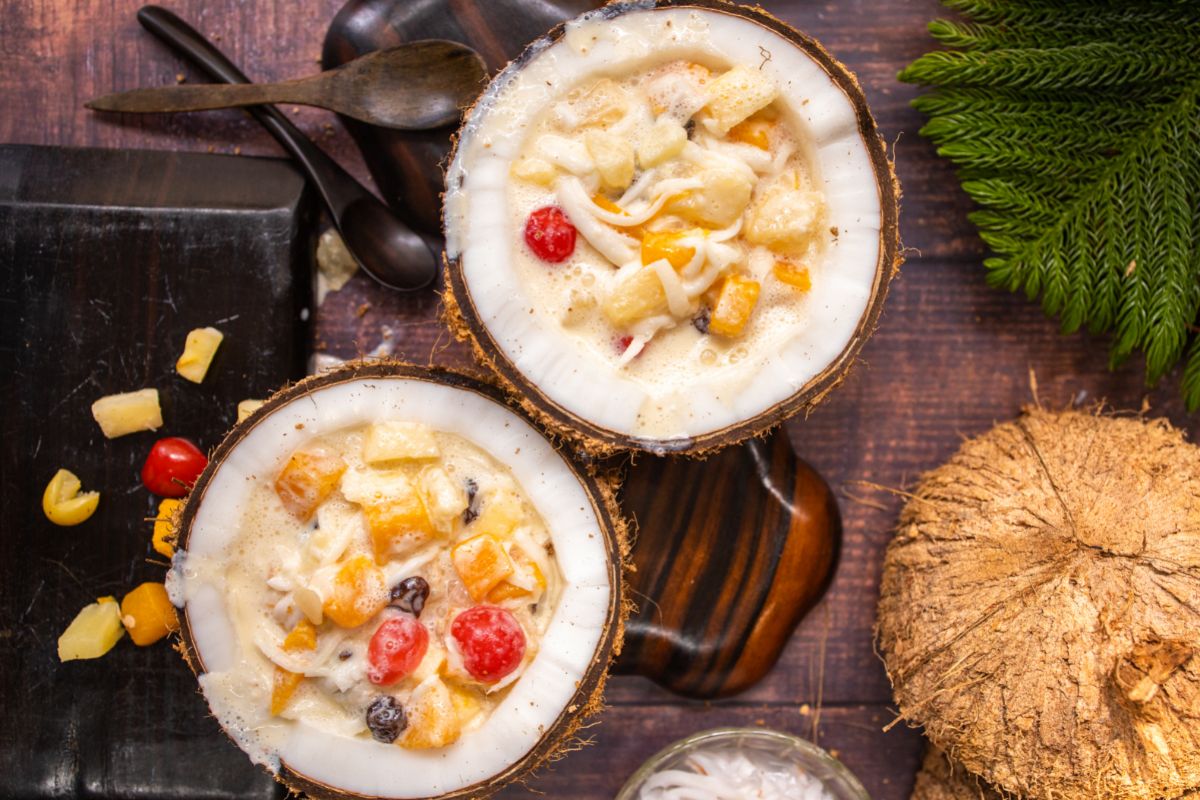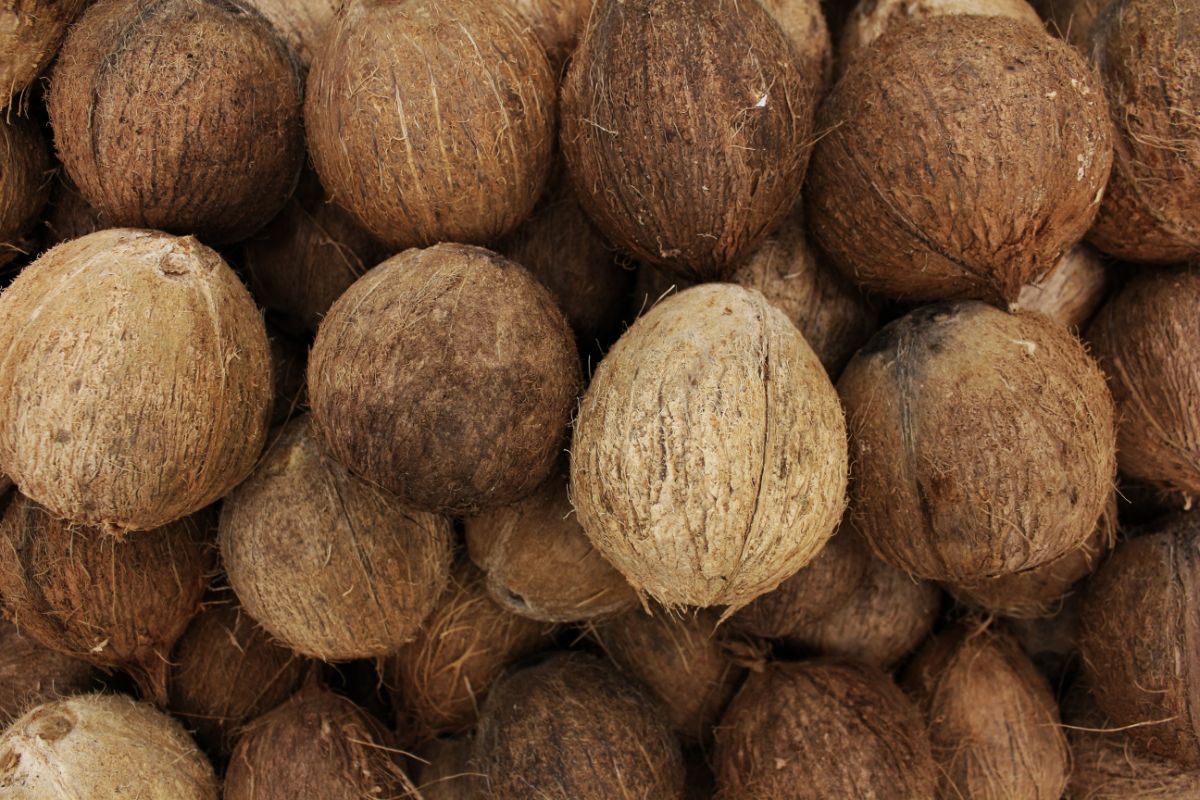If you like the taste of coconut, you might be wondering what category it falls into. Read on to learn whether it’s a fruit, nut, seed, or vegetable and which group it primarily belongs to.
What makes a coconut a fruit?
A coconut is more of a fruit than any other type of food. Many laypeople may mistake the coconut for a fruit because it tastes sweet. It also grows on a tree, but the coconut palm is actually not a real tree.
However, botanists classify the coconut as a fruit because it falls under the drupe category. More specifically, it is a fibrous single-seeded drupe.
Drupes have a hard shell that goes over the seed. There’s the endocarp, the innermost layer just above the seed. After that you have the mesocarp and finally the exocarp.
However, if you buy a coconut from your local grocery store, it only contains the endocarp.
What makes a coconut a nut?
A coconut is not a real nut, but many people may think of it as such. One definition of “nut” is that it is a fruit with a pit. Coconuts fall within this definition.

Unfortunately, it doesn’t meet the stricter requirements for nuts. For example, real nuts don’t open as they mature to release their seeds. Animal digestion and the breakdown of the pericarp are the only things that cause nuts to open.
What Makes a Coconut a Seed?
You can also think of the coconut as a seed. As mentioned earlier, it is a single seeded fruit. The seed of a fruit is the part of a flowering plant where reproduction takes place.
A coconut contains three pores or eyes at one end. Shoots will come out through these pores after a baby plant has grown inside. However, a coconut is still more of a fruit than a seed.
Why is a coconut not a vegetable?
While you might be able to argue that a coconut is a fruit, nut, or seed, the same is not true of a vegetable.
For one thing, “vegetable” is a culinary rather than a botanical term. A good example of this is the tomato, which is botanically a fruit but is often treated as a vegetable in the kitchen. When you cook with coconut, you almost always treat it as a fruit, nut, or seed.
Now, one could argue that it fits an older definition of vegetables. Specifically, this is the definition that says a vegetable is anything from a plant that humans can eat. However, that would make all other fruits a vegetable, and not many people use that definition.
Similar fruit to the coconut
The coconut is primarily a fruit, although it meets the criteria for other foods. But what makes it more of a fruit is that it’s part of the drupe family. Consider some other popular members:
- peaches
- olives
- apricots
- plums
- cherries
- mangoes
Even certain nuts, like almonds and pecans, belong to the drupe family. You can also add fruits like raspberries and blackberries. Technically these are drupes because they are made up of clusters of small drupes.

How to use the coconut
No matter how you categorize it, you can use coconut in a variety of ways. The most common option is to consume it, but you have other options. Here are some methods you can use to consume coconut.
eat it alone
One of the easiest ways is to cut up a coconut and eat it as is. You can eat it as a snack or add it to a fruit salad or on its own as an accompaniment to a meal.
Another option is to dry the coconut and eat it later. Coconut is sweet and can make you feel like you are on the beach.
If you can’t find fresh coconut, check your grocery store’s freezer aisle. You may be able to find frozen coconut chunks. Of course, you can also freeze fresh coconuts if you like the cooler temperatures of the frozen stuff.
Add it to recipes
Many people add coconut to a recipe, either to eat or to drink. For example, the Pina Colada combines coconut with pineapple. You can add fresh coconut to your drink to make it taste better.
If you love to bake, you’ll find countless recipes that call for coconut. Make coconut bars for dessert or add coconut bread for sweet bread.
You can also swap out coconut milk for cow’s milk in some recipes. This can be a good option if you are lactose intolerant or want to stick to a vegan diet.

drink coconut water
Coconut water is another amazing product that you can find at many grocery stores. In the past, doctors used it instead of regular intravenous (IV) fluids when they didn’t have enough regular IV fluids.
More recently, people have started drinking it instead of regular water. It contains electrolytes, making it a great alternative to Gatorade and other workout drinks high in artificial sugars.
Use coconut oil
Another new option for using coconut is coconut oil. Some people use it as a moisturizer on their skin. It can help soothe skin irritation and even protect your skin from the sun.
Of course, you can also cook with it and add it instead of other oils. It can be safer than corn oil and other oils at extremely high temperatures.
